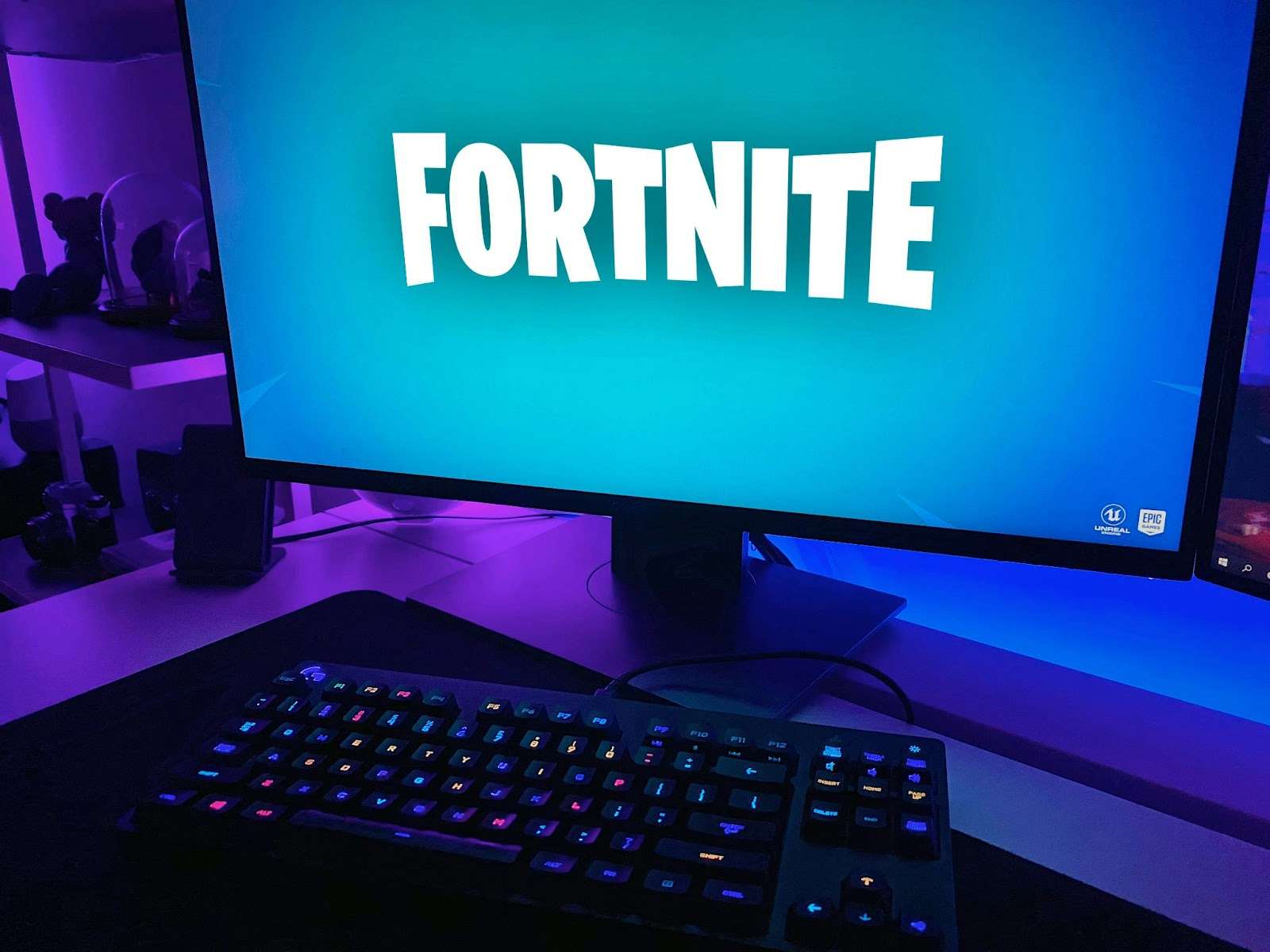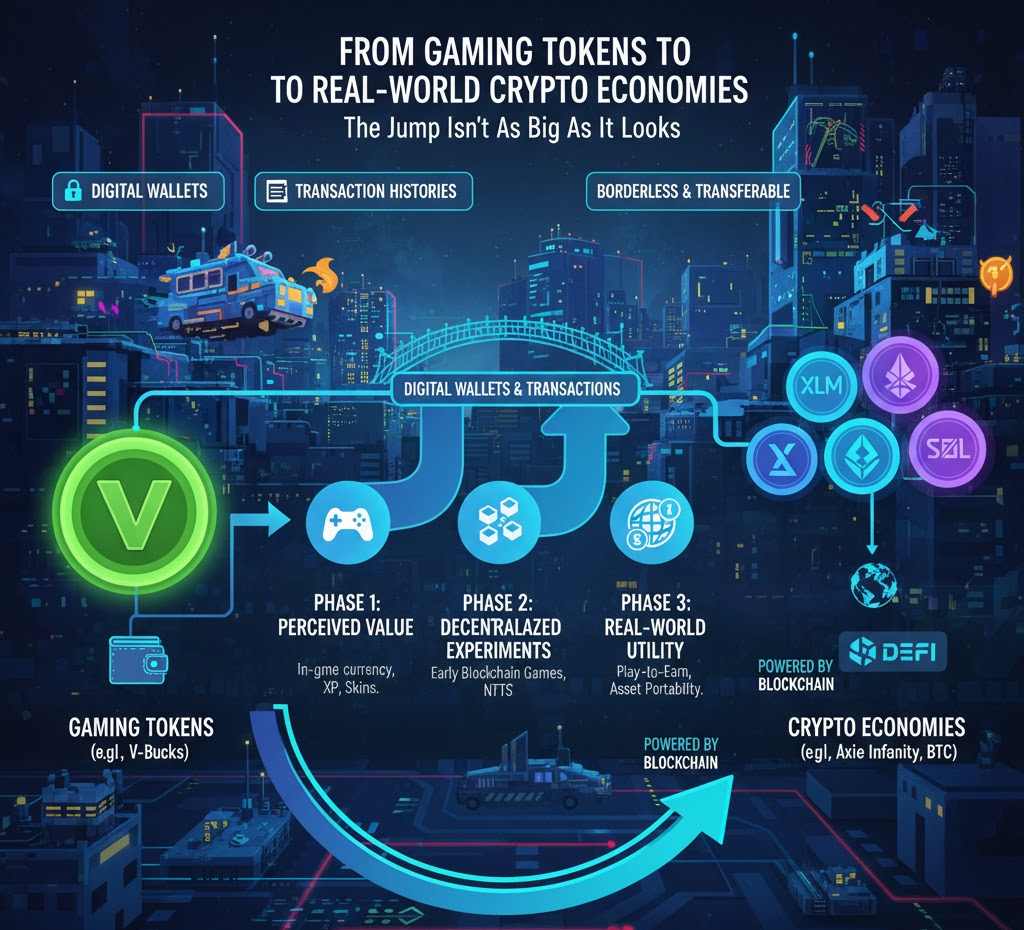From V-Bucks to Crypto Tokens: How Fortnite Inspired New Economies

Thanks to games like Fortnite, gamers have operated inside digital economies for years. From buying V-Bucks to trading rare skins, players already understand virtual value better than most investors.
Fortnite’s in-game economy paved the way for crypto markets, showing how digital ownership can power a new era of online finance.
How Fortnite Built a Digital Economy
Of course, gameplay was the main reason Fortnite was a global phenomenon. Yet, part of its success was down to the fact that it created an economic loop that players actually enjoyed taking part in.
The V-Bucks system introduced a spendable in-game currency tied directly to real-world money. Cosmetics, skins, and emotes became the “goods”, while scarcity and status drove demand.
As of 2025, Fortnite has generated over $40 billion in lifetime revenue, with the majority of that revenue coming from in-game purchases. This clearly proves that players trust and engage with virtual economies. By teaching users that digital assets have value, Fortnite effectively created a generation that was comfortable transacting in purely digital spaces.
Tokenized Platforms Beyond Gaming
Today, the same economic mechanics that made Fortnite a success are shaping many different online platforms. Decentralized apps, metaverse projects, and online casinos now operate on token-based systems.
Crypto casinos are one clear example. For instance, users looking to enjoy the fastest casino payout in Australia often turn to crypto casinos that allow users to deposit, play, and withdraw instantly without revealing any personal information. These casinos also use instant, borderless transactions, which echo the simplicity of in-game payments. The difference is that, instead of V-Bucks, players use tokens like BTC or ETH to play, all without centralized approval or banking delays.
Both ecosystems operate on the same logic: speed, transparency, and user control. Clearly, the lesson from Fortnite’s model is that when digital ownership feels seamless and rewarding, gamers are far more likely to engage.
Real Power Behind Virtual Assets
In Fortnite, rare skins and cosmetics reinforce the concept of digital scarcity, because players know that once an item disappears from the store, its perceived value spikes.
Blockchain tech was later built on this principle. NFTs and crypto assets use the same psychology but apply it to verifiable ownership. However, unlike in Fortnite, where Epic Games controls the ecosystem, blockchain allows users to actually own and trade digital assets freely.
Tokenization has now expanded far beyond games. Everything from securities to collectibles has become a digital asset that can be transferred and tracked securely on the blockchain.
From Gaming Tokens to Real-World Crypto Economies

The jump from V-Bucks to crypto isn’t as big as it might look. Both rely on digital wallets, transaction histories, and perceived market value. The difference? Blockchain assets are borderless and transferable.
Gamers already understood the fundamentals of token management long before crypto exchanges became household names. They knew all about storing, trading, and tracking value online. That’s why gaming communities were among the first to experiment with decentralized economies and play-to-earn models.
Many blockchain games, such as Axie Infinity, have mirrored the Fortnite loop, with players earning in-game tokens that can be converted into real-world value. So, it’s a natural extension of what Fortnite pioneered, but powered by distributed ledgers instead of centralized servers.
Regulation and Mainstream Adoption
As tokenized economies spread, regulation is being implemented across the world. Governments and financial institutions are developing frameworks to govern digital asset transfers. Yet, the cultural groundwork (the idea that digital equals valuable) has already been laid by games like Fortnite.
For gamers who are now entering the crypto space, that sense of familiarity reduces fiction. So, what once felt experimental now feels intuitive. The reason? Gamers were some of the earliest adopters of a digital-first mindset.
Conclusion
Fortnite didn’t invent digital economies, but it perfected how they operate and prepared a generation of gamers for tokenization. In 2025, the same emotional triggers that drive a player to buy a limited-edition skin now power billion-dollar crypto markets.
By making virtual value tangible, Fortnite turned playtime into a financial education. As blockchain systems involve, education will continue to influence the way gamers invest, trade, and interact in the age of crypto.
FAQs
| Question | Answer |
|---|---|
| Can digital assets from Fortnite be converted into crypto? | Not directly. Fortnite items are locked within Epic’s system, but their success inspired blockchain-based games where players own, trade, and monetize similar digital assets. |
| How do tokenized economies differ from traditional finance? | Tokenized economies use blockchain to represent assets digitally, enabling 24/7 trading, transparency, and direct ownership. This differs from traditional systems that rely on intermediaries and limited operating hours. |
| What industries are adopting tokenized economies outside gaming? | Sectors like real estate, art, and supply chain management use tokenization to represent assets digitally. This improves transparency, reduces friction, and unlocks liquidity in traditionally illiquid markets. |
Disclaimer
The content of this article is provided for informational and educational purposes only and does not constitute financial, investment, legal, or other professional advice. Discussion of virtual currencies, digital economies, and tokenized assets involves substantial risk and may not be suitable for all readers. Readers should conduct their own research and consult qualified advisors before making any decisions related to digital asset ownership, trading, or investments. Past performance of virtual assets or digital-economy models does not guarantee future results. The author and publisher disclaim any liability for losses or damages arising from reliance on the information contained herein.
References
- Okatan, K. (2023). An overview of key digital assets of decentralized finance: Cryptocurrency and NFT. PressAcademia Procedia, 16(1), 73–78.
- Wang, G., & Nixon, M. (2021). SoK: Tokenization on Blockchain. EPrint Archive.
- European Union Blockchain Observatory & Forum. (2023, March 21). Tokenization of assets & blockchain. Publication.
- McKinsey & Company. (2024, June 20). From ripples to waves: The transformational power of tokenizing assets. Report.
- Riabokin, M., & Kotukh, Y. (2024). Conceptual basics of RWA tokenization in the digital economy. Herald of Kyiv Institute of Business and Technology.
- Zavolokina, L., et al. (2024). The Internet of Value: Unleashing the Blockchain’s Potential with Tokenization. Business & Information Systems Engineering, 66, 411–419.
